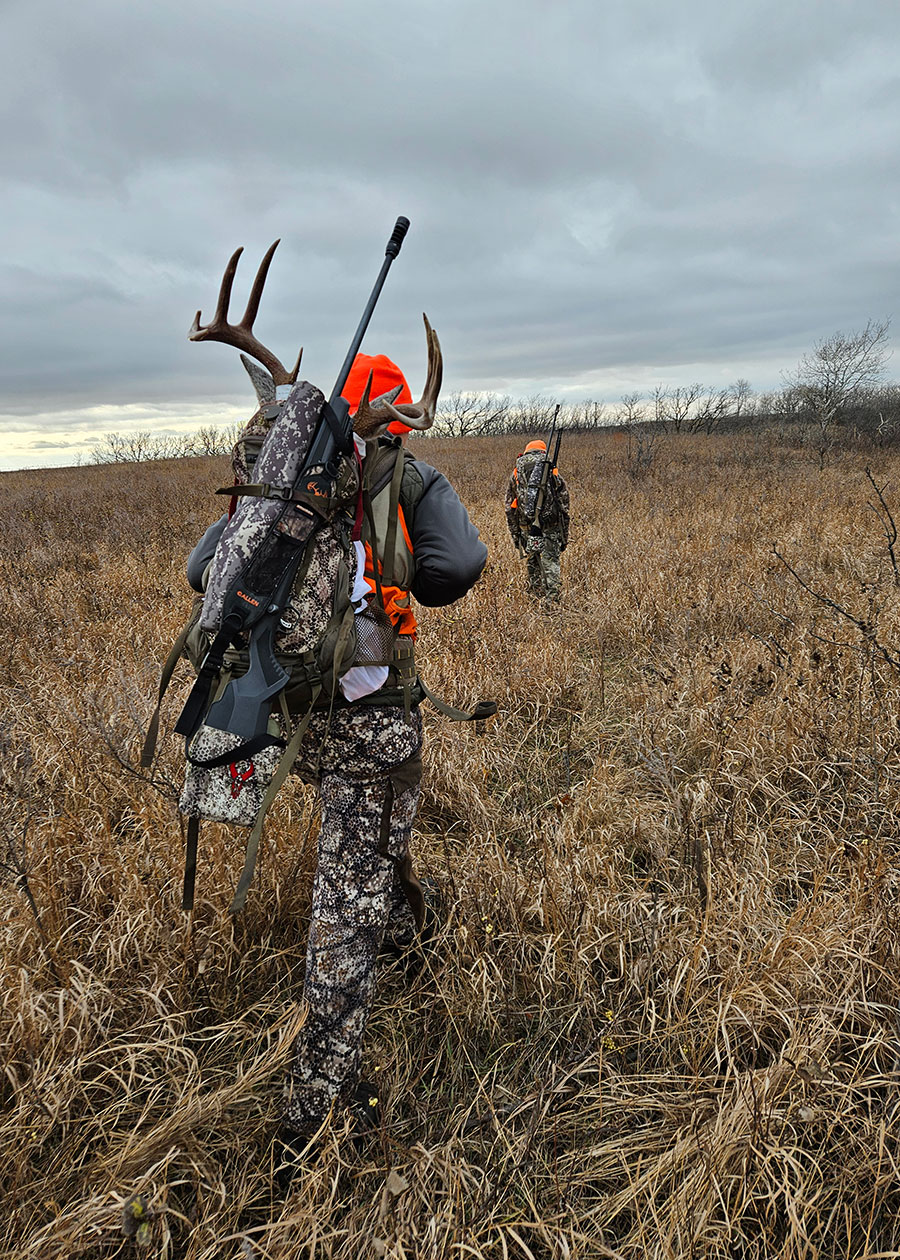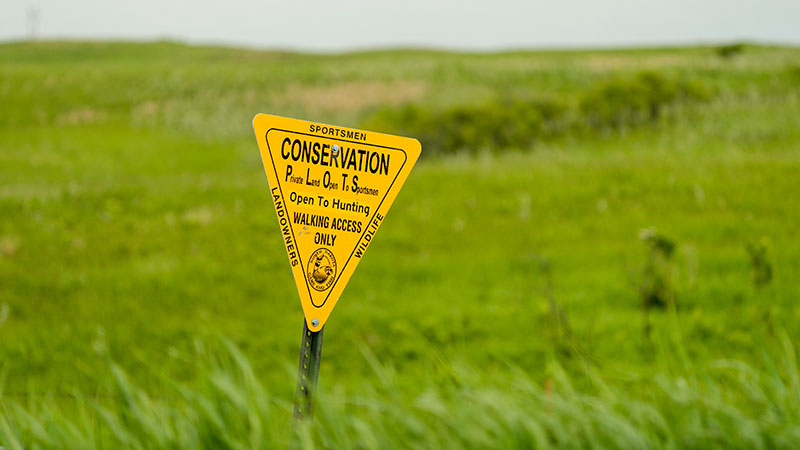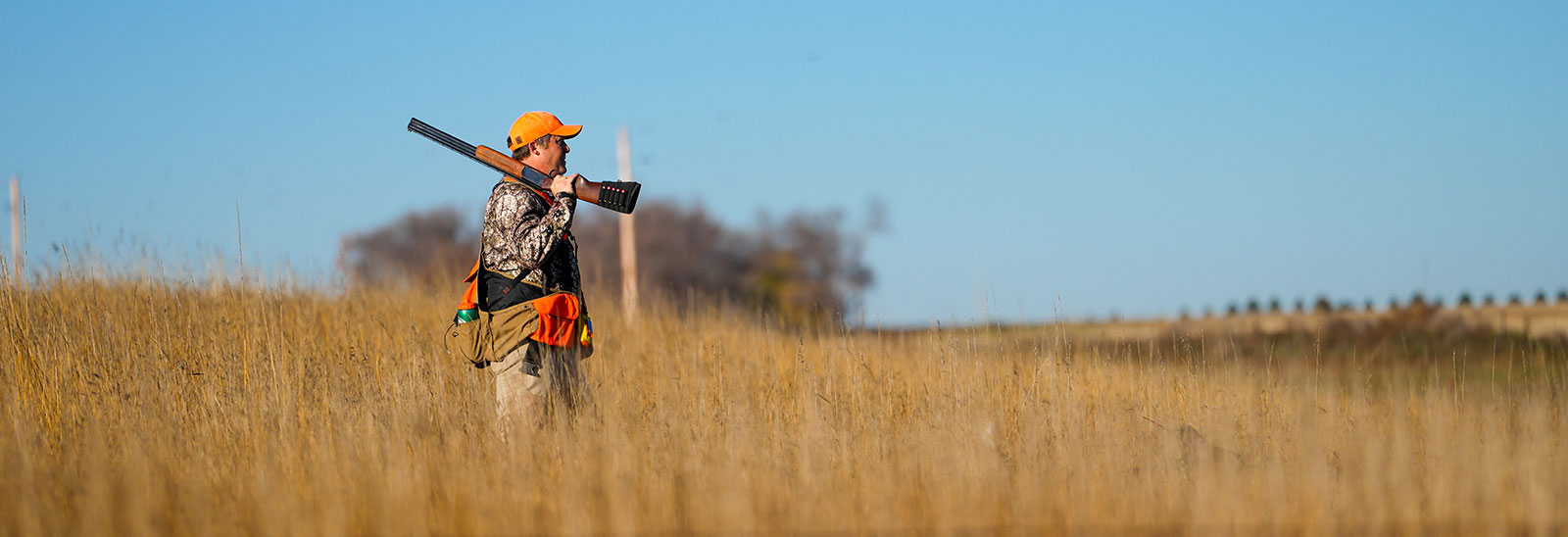Working With Partners
Editor

More Private Land Open To Sportsmen acres will be available to hunters this fall compared to last year. That’s always good news for the walk-in access program that has been a fixture in rural North Dakota for nearly three decades.
Kevin Kading, North Dakota Game and Fish Department private land section leader, provided an update on the PLOTS program in mid-July with an eye on the upcoming hunting season.
NDO: Let’s start with what hunters really want to know about the PLOTS program. How many PLOTS acres will be found across North Dakota’s rural landscape this fall?
Kading: At the time of this interview in mid-July, we’re at 876,000 acres. We anticipate being around 880,000 acres sometime in the next month or so when the hunting season starts. Heading into fall 2024, we were at about 836,000 acres, so roughly 880,000 acres is a nice, sizeable increase for the year. One thing to add is that not only did we have a nice sizable increase in acres this year, but we had a nice addition of about 5,000 acres of new grass planted. That’s new habitat that’s going to go in for 10 to 15 to, 20 years in some cases. So, these are nice additions to the PLOTS program. Kind of the premier PLOTS tracts, I guess you could call them. Those are the ones that they’re a little higher dollar figure for us, but they’re also paying dividends long-term.
NDO: What do you attribute to pretty significant gains in acres the last couple of years?
Kading: There’s been a few things. We’ve increased our funding authority, so we have a little bit more money out there for the program. We’ve also promoted the program quite a bit more in different parts of the state, and we added some staff in the last legislative session so there are more boots on the ground talking to landowners. So, all of that equates to more acres on the landscape.
NDO: Doesn’t this increase in acres also indicate that landowners around the state are still interested in the PLOTS program?
Kading: We still have a lot of interest in the program. As it stands right now, there’s about 100,000-plus acres of what we call prospects. These are people who have reached out to us either on their own or through a promotion that we’ve done or some type of outreach … they’ve expressed interest and we’re working through that list as we speak. That’s in addition to the 876,000 acres we have now. Even so, doesn’t mean that every one of those acres will qualify for the program. Or maybe some of the landowners may decide the program is not for them. But there’s good interest in the program and people are still interested in pursuing PLOTS, which is a good thing.

NDO: Is putting 1 million acres of PLOTS on the landscape still a legitimate goal?
Kading: Yes. We have a goal of reaching 1 million acres by 2028, and I think we’re going to get there. It’s not as easy as it was back in that 2007-08 timeframe when we had 1 million acres in the PLOTS program because things have changed on the landscape. But again, with all the additional effort, manpower and funding going into the program, I think we can get there, even though it takes a lot more work than it did back in the day.
NDO: North Dakota’s Outdoor Heritage Fund was established in 2013 as a multi-milliondollar program to provide grants to state agencies, tribal governments, political subdivisions, and nonprofit organizations, with higher priority given to projects that enhance conservation practices in this state by supporting one or more statutorily identified directives. The Outdoor Heritage Fund may receive up to $40 million per biennium from oil and gas production tax revenue. The Department’s private land initiative has thrown its hat into this ring for OHF funding, but it’s been a while, correct?
Kading: In December of 2024, the Department hosted the North Dakota Habitat and Access Summit, and we received a lot of input before, during and after from hunters, landowners and people who attended. And some of the recommendations were that the Game and Fish Department should pursue the Outdoor Heritage Fund and use that to bolster the PLOTS program. And so, we did just that. In fact, we actively put together a grant and in June it was awarded and that’s additional dollars that will go into the PLOTS program for long-term — 10- to 20-year agreements — in the western part of the state. In addition to that, we’ve partnered with a lot of different partners. Pheasants Forever has a nice OHF grant that they received this last grant round as well, which will provide additional incentives to people to put their land into PLOTS. We’re working with Ducks Unlimited and some other partners as well and when you couple all those things together, it equates to some pretty good opportunities for landowners out there and great opportunities to put more habitat on the landscape and provide more access.
NDO: So, this Outdoor Heritage Fund grant is just for the western part of the state?
Kading: This OHF grant that we received is mostly just for the western part of the state … it’s for land that already has good quality habitat, like our badland’s tracts, riparian areas, creeks and woody draws that are already good hunting habitat. While that will be a PLOTS access payment, we’re working with partners like the North Dakota Wildlife Federation and the Rocky Mountain Elk Foundation to incentivize that even more to add a little kicker payment on top of their PLOTS payment. So, that was the emphasis for that grant. That doesn’t mean we couldn’t go into other parts of the state, but that was one that we felt would be well received by the Outdoor Heritage Fund board and well received by producers in that part of the state. The grant was awarded in July, finalized and we’re actually doing the paperwork now. So those acres will be starting to be added to the program later this fall, or probably next year for hunters to be able to access.
NDO: Considering the growing need to put more wildlife habitat on the landscape and provide additional access to hunters, what role does the PLOTS program play in alleviating these concerns?
Kading: When we were at peak years of CRP, habitat was in better condition. There was more of it available, and the PLOTS program at that time focused more on just acquiring access to those lands. And in the last 10 years we’ve focused more on habitat development and these partnerships to put more habitat on the landscape. But still, it’s really a small dent in the big picture. It’s going to take more than the PLOTS program to get that done. Another point of the summit was how can we get more creative? How can the state of North Dakota and hunters and landowners get involved? Not just the North Dakota Game Fish Department with the PLOTS program. So, we all have to pitch in and figure out ways to do that. Again, that’s where these partnerships come in, where the Outdoor Heritage Fund grants can come in. There’s other dollars, other funds and other grants available that we’re exploring new ideas, trying to get more creative. I’m trying to think a little differently than just the PLOTS program in terms of getting more habitat on the landscape.
NDO: Not all PLOTS tracts look the same. What do you say to hunters who wonder why some acres are even enrolled in PLOTS because they don’t harbor the habitat some people were expecting?
Kading: PLOTS is meant to be for a lot of different species, and it varies depending on what part of the state you’re in. Sometimes hunters wonder why we enroll a piece of cropland in the program and it might be because it’s a good waterfowl hunting access area, or there might be some wetlands in the middle of that field that offers some waterfowl hunting or some late season pheasant hunting opportunities. In other cases, we wouldn’t probably enroll those areas if it wasn’t in the right spot or in the right part of the state. Other areas are exclusively set up more for deer and pheasant or upland type hunting. Those areas are going to be more grasslands or more of those woody areas or have a wetland, cattails component. It really does depend on what part of the state you’re in, what species that we’re enrolling that piece of property for. But I can say that there’s a reason we put it in the program. It’s because there’s some hunting value out there for some species, it just might not be the one that you’re looking for that particular day.

